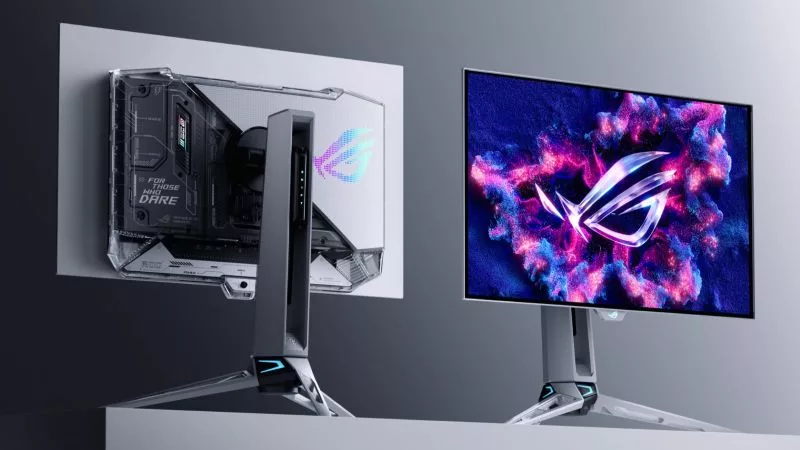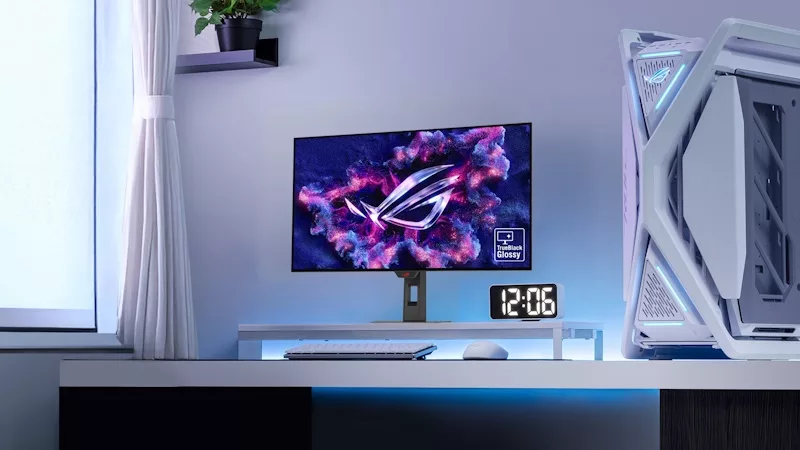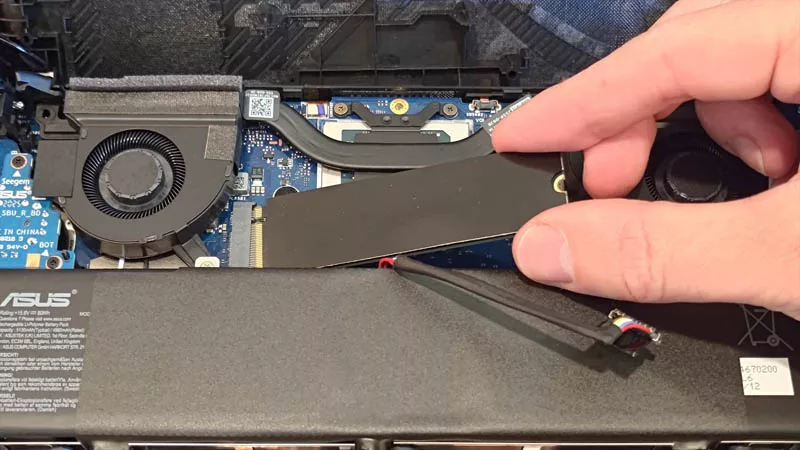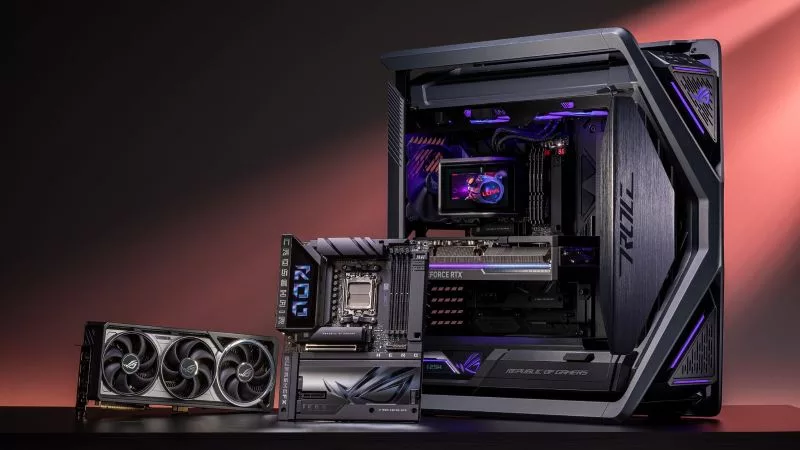Maximus V Formula: Hybrid Thermal Solution Detailed
Way back in 2007 and 2008, the Blitz and early Maximus motherboards featured waterblocks integrated into the heatpipes used by the motherboard. They were called Fusion because they fused the option of watercooling the northbridge to achieve a higher overclock, or you could simply leave the sufficiently sized air-cooling heatsink to do the job if you weren't using water.  Now in 2012, this concept makes a return on the Maximus V Formula as one of its key features, however this time the ROG team applied it to the VRMs in the development of the new Hybrid Thermal Solution. While we've lost the northbridge as a separate chip and the Z77 heatsink must be particularly shallow to fit under multiple graphics cards, as the Intel processors evolve to include ever more technologies (which we cannot yet detail), the demands on the VRM (power) hardware only increase, especially under high-to-extreme overclocking.
Now in 2012, this concept makes a return on the Maximus V Formula as one of its key features, however this time the ROG team applied it to the VRMs in the development of the new Hybrid Thermal Solution. While we've lost the northbridge as a separate chip and the Z77 heatsink must be particularly shallow to fit under multiple graphics cards, as the Intel processors evolve to include ever more technologies (which we cannot yet detail), the demands on the VRM (power) hardware only increase, especially under high-to-extreme overclocking.  But it's not just the overclockers that benefit - for watercoolers that design silent systems with only radiator fans (i.e. nothing directed near the CPU socket), this can essentially cause the VRMs to cook as the heatsink above gets no active airflow. Even with the CPU under non-overclocked conditions, Intel's TurboBoost (and AMD's TurboCore for that matter) along with a well designed UEFI BIOS not only measure the CPU TDP, but also the VRM temperature too. If they detect over temp protection (OTP) has kicked in then they won't Turbo. In the most extreme examples they will even throttle or shutdown the PC in a failsafe attempt to prevent VRM damage. Clearly then, looping in the VRM waterblock into such builds is an necessity as to preserve the silent build ethos.
But it's not just the overclockers that benefit - for watercoolers that design silent systems with only radiator fans (i.e. nothing directed near the CPU socket), this can essentially cause the VRMs to cook as the heatsink above gets no active airflow. Even with the CPU under non-overclocked conditions, Intel's TurboBoost (and AMD's TurboCore for that matter) along with a well designed UEFI BIOS not only measure the CPU TDP, but also the VRM temperature too. If they detect over temp protection (OTP) has kicked in then they won't Turbo. In the most extreme examples they will even throttle or shutdown the PC in a failsafe attempt to prevent VRM damage. Clearly then, looping in the VRM waterblock into such builds is an necessity as to preserve the silent build ethos.  The Hybrid Thermal solution contains both air-cooling and watercooling elements. It's construction contains an entirely copper water channel with electroplated nickel barbs, meaning 100% material compatibility with existing watercooling systems. Alongside it a heatpipe is used to distribute the heat more evenly to avoid hot-spots and aid both water and air-cooling. These both are then buried under anodized aluminum heatsink fins, which are designed to handle the alternative air-cooling conditions.
The Hybrid Thermal solution contains both air-cooling and watercooling elements. It's construction contains an entirely copper water channel with electroplated nickel barbs, meaning 100% material compatibility with existing watercooling systems. Alongside it a heatpipe is used to distribute the heat more evenly to avoid hot-spots and aid both water and air-cooling. These both are then buried under anodized aluminum heatsink fins, which are designed to handle the alternative air-cooling conditions.  Unfortunately heat from the VRMs conducts not only into the heatink, but also into the PCB in equal measure. By chilling the heatsink the greater potential thermal difference draws the VRM heat into it, reducing that which is transferred into the PCB. This helps prevent PCB (tracing) warping and signal issues that get more pronounced the faster you clock the CPU and Memory. This factor might be slight and not generally of concern to air coolers, but it still might make the difference for a few notches of BClk that means a world record or competition win for professionals. [gallery include="" size="medium" link="file" template="file-gallery" columns="2"]
Unfortunately heat from the VRMs conducts not only into the heatink, but also into the PCB in equal measure. By chilling the heatsink the greater potential thermal difference draws the VRM heat into it, reducing that which is transferred into the PCB. This helps prevent PCB (tracing) warping and signal issues that get more pronounced the faster you clock the CPU and Memory. This factor might be slight and not generally of concern to air coolers, but it still might make the difference for a few notches of BClk that means a world record or competition win for professionals. [gallery include="" size="medium" link="file" template="file-gallery" columns="2"]
Author
Popular Posts

Prepare for Tandem OLED splendor with these new ROG gaming monitors

How to adjust your laptop's P-Cores and E-Cores for better performance and battery life

How to Cleanly Uninstall and Reinstall Armoury Crate

32-inch glossy WOLED panels debut in the ROG Strix OLED XG32UCWMG and XG32UCWG gaming monitors

How to upgrade the SSD and reinstall Windows on your ROG Ally, ROG Xbox Ally, or ROG Xbox Ally X
LATEST ARTICLES

Take your ROG allegiance to the next level with an OMNI action figure
The Republic of Gamers’ famed mascot, OMNI, comes to life through two new collectible action figures.

With the ROG NUC, your only limit is your own creativity
The small size, potent performance, and versatile connectivity of the ROG NUC makes it a perfect fit for a wide range of scenarios.

Graphics cards, monitors, motherboards, and more: everything ROG announced at Gamescom 2025
ROG is a making a splash at Gamescom 2025 with a new Matrix graphics card, Hatsune Miku gear, and much more.

Hatsune Miku and ROG deliver a killer lineup of gaming hardware
Hatsune Miku and ROG are teaming up to give you gear for the ultimate vocaloid-themed gaming PC battlestation.

Brighten up your battlestation with new white ROG peripherals
Whether you want frosty peripherals to stand out amongst your hardware or blend in with your Moonlight White setup, we have you covered.

All the new gaming gear revealed from the ROG Lab at CES 2025
ROG is going harder than ever in 2025. Here's everything we announced at the Consumer Electronics Show this year.